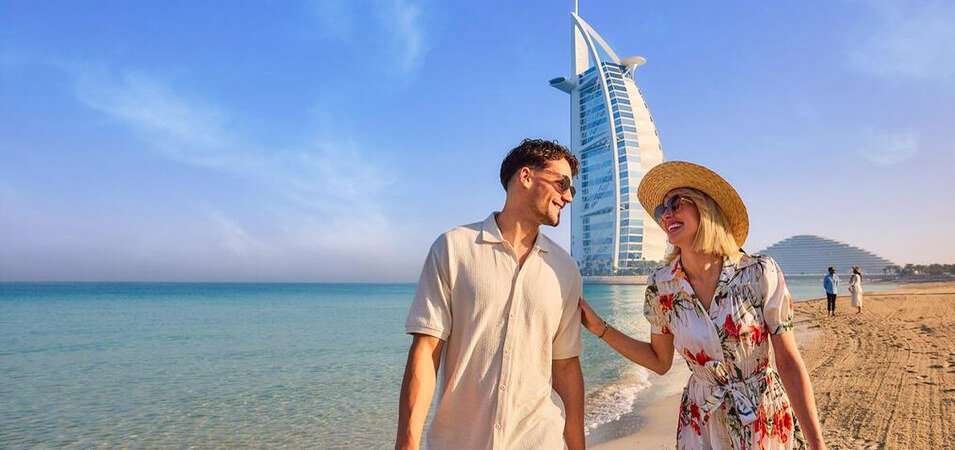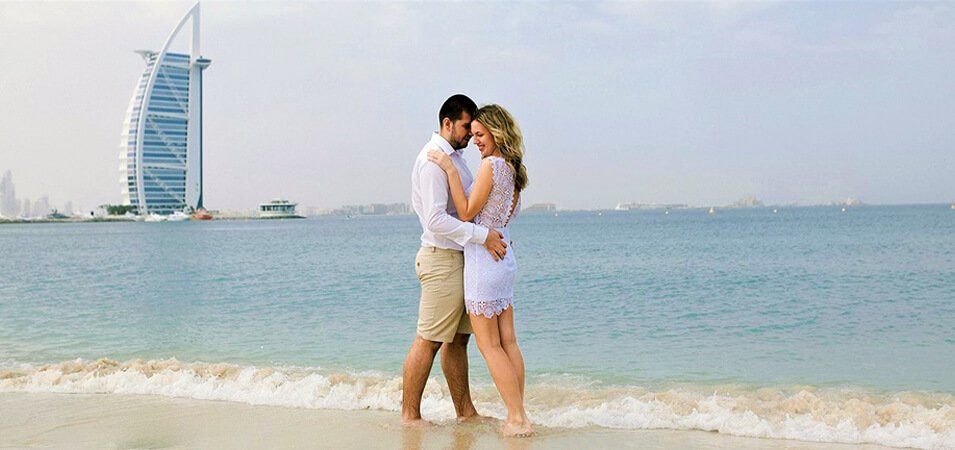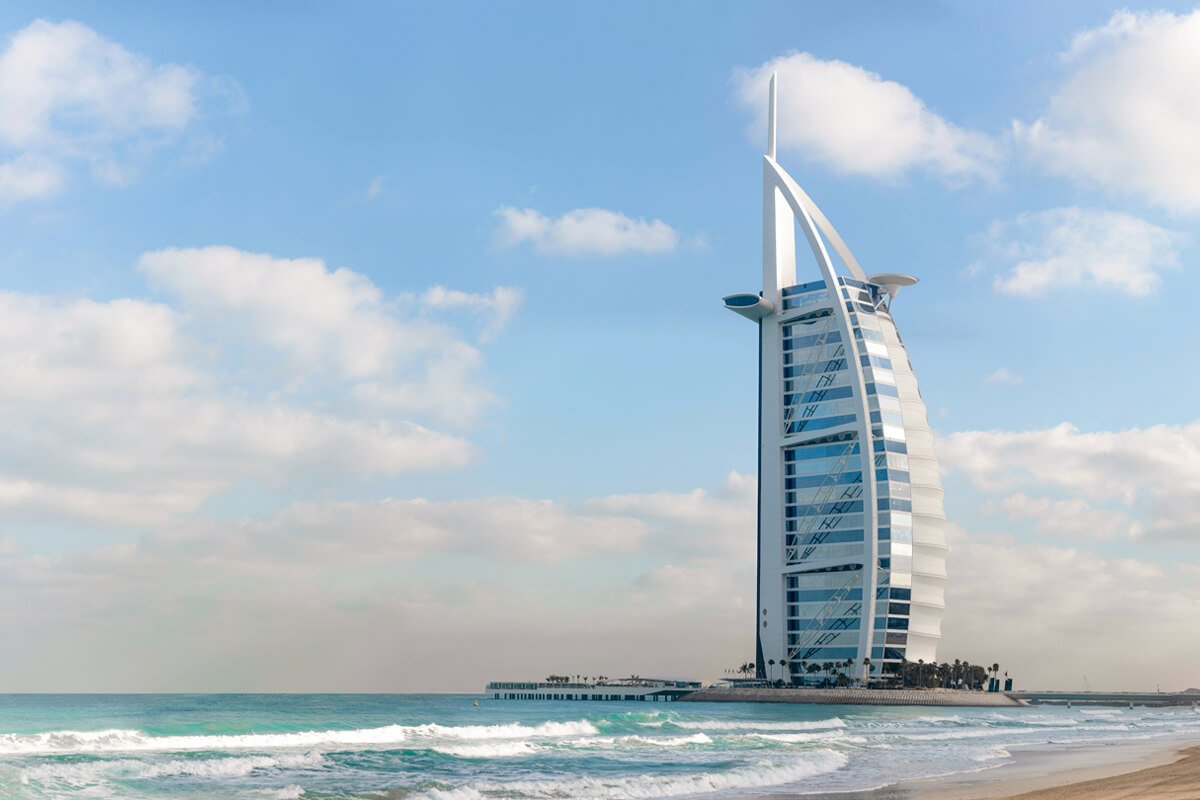Nestled on its artificial island off the coast of Dubai, the Burj Al Arab stands as an emblem of opulence and architectural innovation. Its sail-shaped silhouette has become synonymous with luxury, drawing visitors from around the globe.
This article delves into the grandeur of Burj Al Arab, providing a comprehensive guide for travelers, particularly those exploring the rich histories and modern marvels of the Middle East, such as the ancient wonders of Egypt.
Historical Context and Conception
The Burj Al Arab was conceived in the mid-1990s as a symbol of Dubai’s rapid development and ambition. The project, led by British architect Tom Wright of WKK Architects, was designed to elevate Dubai’s status on the global stage.
Inspired by the sail of a dhow, a traditional Arabian vessel, the Burj Al Arab reflects both cultural heritage and futuristic design. This fusion mirrors Egypt’s architectural feats, where ancient structures like the pyramids blend historical significance with advanced engineering.
Architectural Marvel
Materials and Technology:
The design incorporates cutting-edge technology and sustainable practices, blending aesthetics with advanced engineering.

Height and Structure:
Standing at 321 meters, the Burj Al Arab was once the tallest hotel in the world, featuring a steel exoskeleton and a distinctive sail-shaped design.
Design Inspiration:
Its sail-like silhouette is inspired by the traditional Arabian dhow, reflecting both cultural heritage and futuristic vision.
Atrium:
The hotel boasts one of the world’s tallest atriums, adorned with vibrant colors and intricate patterns reminiscent of Egyptian hieroglyphics.
Luxurious Interiors
The Burj Al Arab’s interiors are a testament to extravagance. Gold leaf adorns the walls, and lavish materials such as marble and crystal are ubiquitous.
Each of the 202 duplex suites offers panoramic views of the Arabian Gulf, and the personalized butler service ensures a stay akin to royal treatment. The opulence rivals that of Egypt’s ancient palaces, where pharaohs enjoyed similar luxuries amidst grandiose settings.
Culinary Excellence
Home to several world-class restaurants, the Burj Al Arab offers an unparalleled dining experience. Al Muntaha, located 200 meters above sea level, provides breathtaking views and a menu that features contemporary European cuisine.
Al Mahara, with its floor-to-ceiling aquarium, offers an underwater dining experience, serving exquisite seafood dishes. These culinary experiences mirror the grandeur of ancient Egyptian feasts, known for their lavish spreads and exotic ingredients.
Exclusive Amenities
- Custom Services: Personalized butler service and unique amenities tailored to the needs of each guest.
- Talise Spa: Located 150 meters above the Arabian Gulf, offering bespoke treatments and therapies for ultimate relaxation.
- Infinity Pools: Luxurious infinity pools with stunning views, providing an exclusive aquatic experience.
- Private Beach: A secluded private beach area for guests to enjoy serene coastal relaxation.
- Helipad: A private helipad for convenient and stylish arrivals and departures.
Sustainability Initiatives
Despite its luxury, the Burj Al Arab is committed to sustainability. The hotel has implemented numerous eco-friendly initiatives, including energy-efficient lighting, water conservation programs, and waste reduction strategies.
These efforts reflect a growing trend in luxury hospitality to balance opulence with environmental responsibility. Ancient Egyptians also practiced sustainability, evident in their advanced irrigation systems and resource management.

Cultural Significance
The Burj Al Arab is more than a hotel; it is a cultural landmark. It hosts numerous events, from fashion shows to international conferences, contributing to Dubai’s reputation as a global hub.
Its cultural significance is akin to that of Egypt’s ancient monuments, which continue to draw scholars and tourists alike, eager to explore their historical and cultural impact.
Comparisons to Egyptian Luxury
Drawing parallels between the Burj Al Arab and Egypt’s historical luxuries provides a unique perspective for travelers. Both destinations offer a glimpse into the lifestyles of the elite, whether it’s the opulence of a modern hotel or the grandeur of an ancient civilization.
This comparison enriches the travel experience, allowing visitors to appreciate the continuity of luxury through the ages.
Travel Packages and Tours
For travelers interested in exploring both Dubai and Egypt, customized travel packages can enhance the experience.
These packages can include stays at the Burj Al Arab combined with tours of Egypt’s iconic landmarks, such as the Pyramids of Giza, the Sphinx, and the temples of Luxor. Such itineraries offer a seamless blend of modern luxury and ancient splendor, appealing to travelers seeking a comprehensive cultural immersion.
Conclusion
The Burj Al Arab stands as a beacon of luxury and innovation, much like the timeless monuments of ancient Egypt. For travelers venturing to Egypt, a visit to Dubai’s architectural marvel adds a modern dimension to their journey.
This iconic hotel not only offers unparalleled luxury but also serves as a testament to the enduring allure of grandiose design and cultural significance. Whether exploring the ancient history of Egypt or the modern wonders of Dubai, travelers are guaranteed an unforgettable experience.
Read Our Related Article:
